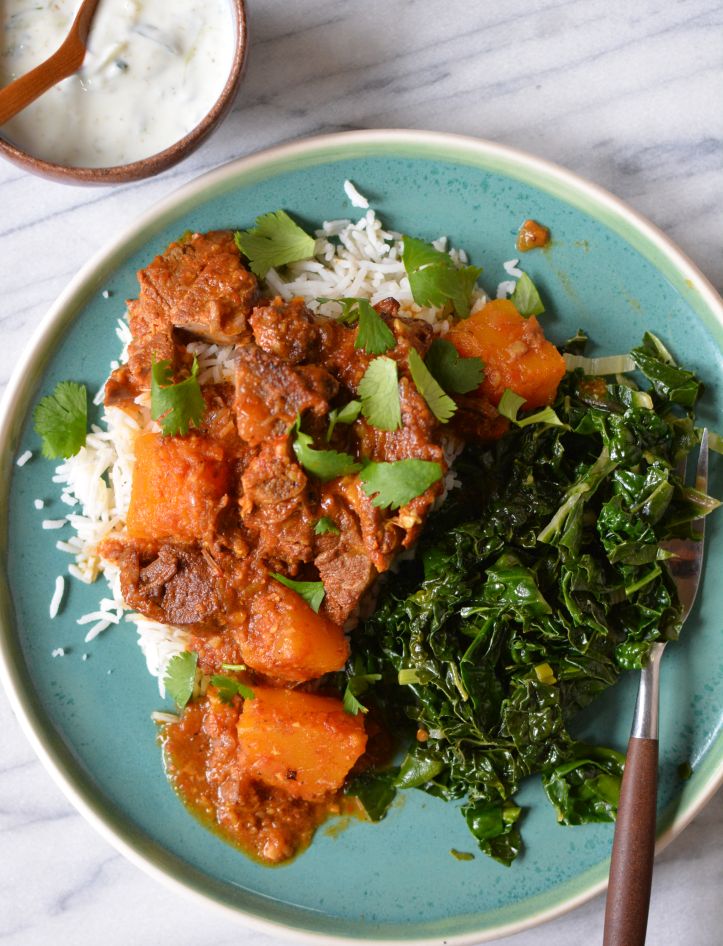
Several factors collided to result in my making this northern Indian curry, one of which was an Indian man who told me that he owned five (5) pressure cookers, some of which were Instant Pots. He was a Silicon Valley techie and loved using them to prepare foods of his heritage.
The second motivation was a Twitter conversation some friends and I had about classic cookbooks and nearly-forgotten cookbook authors. Food writer Nik Sharma and I both mentioned Julie Sahni, who wrote with precision and authority. Her Classic Indian Cooking is a one that I’ve turned to many times. We chatted about religion, culture and cuisine for my Asian Tofu book research and she said that her Savoring India, part of a series by Williams Sonoma, was also amazing and beautifully illustrated with color photography throughout. I bought a well priced copy via Amazon and have never regretted it.
Finally, I’m in the middle of editing Vietnamese Food Any Day, which means I needed an unfussy main dish that would age well in the fridge and could be served over days. Sahni’s gosht recipe was uncomplicated and like many braises, totally doable in the Instant Pot. Her recipe headnote (introduction) conveyed the recipe's ease and flexibility.
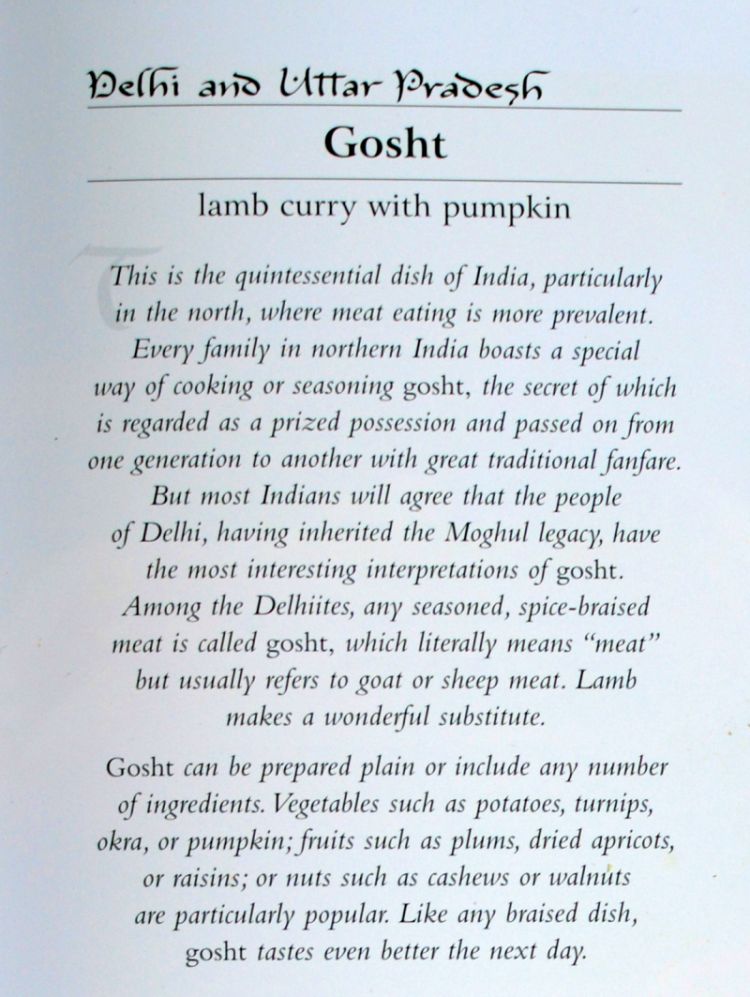
My general rule in adapting conventional recipes to the Instant Pot and other pressure cookers are: Add enough liquid to just cover the solids and to cook for 25 percent (including depressurization) of the regular estimated cooking time. If I need to hedge the cooking time, I’ll use hot water to kickstart the cooking at the front end, like for the Instant Pot chicken pho recipe.
The original recipe called for boneless lamb shoulder but our local butcher only had lamb shoulder steaks and necks. So I used those cuts, which had lots of flavor due to the bone. The bone-in cuts reminded me of gosht that we'd had at Shalimar, an Indian-Pakistani restaurant in Fremont, California.
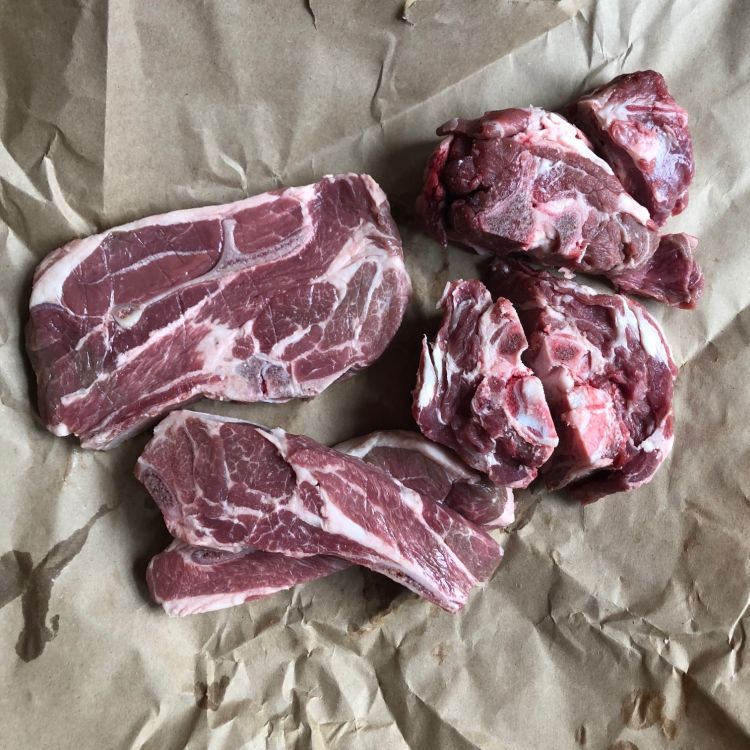
Then it was a matter of browning the meat in the Instant Pot. Be patient and let the IP heat up on Saute/More until the oil is shimmering. Then brown in batches.
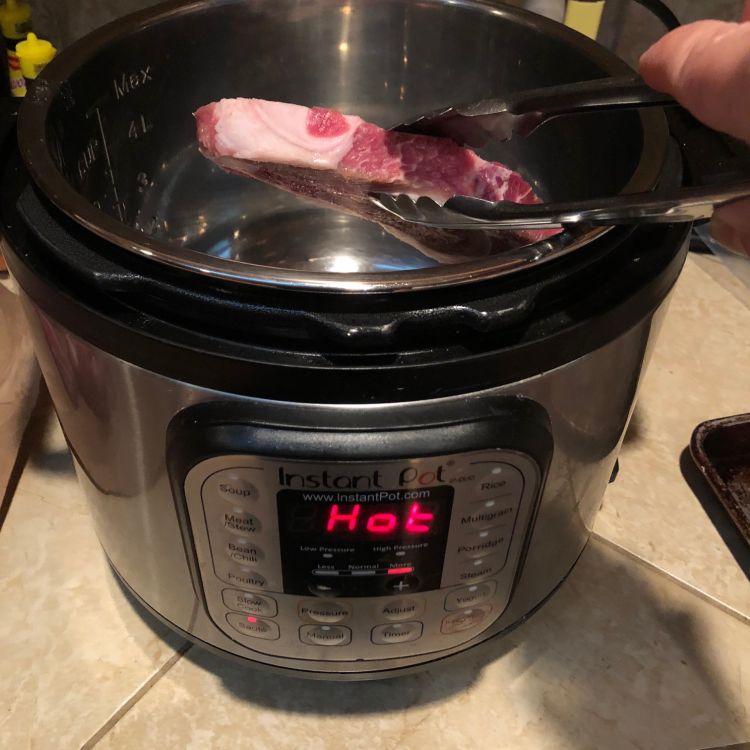
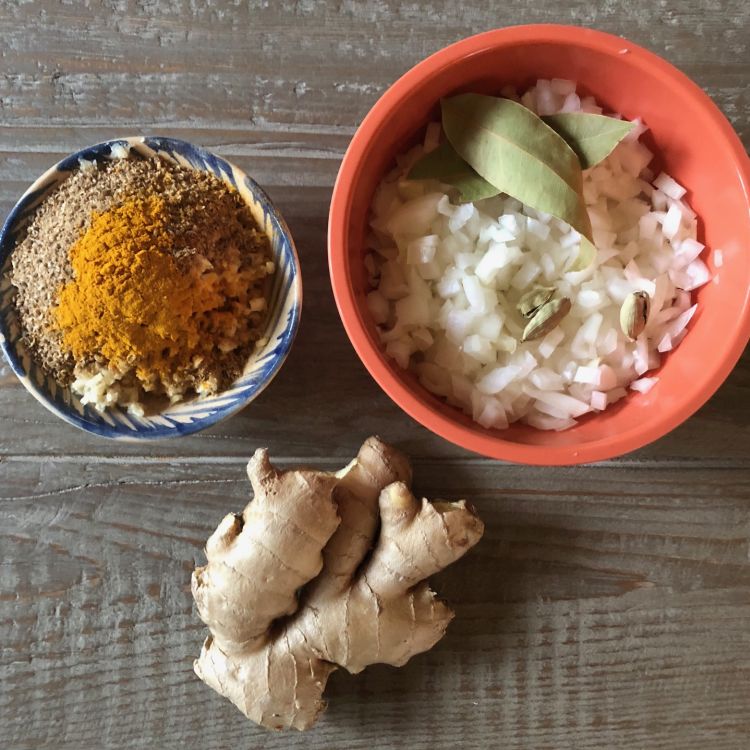
Then like any other braise, aromatics – onion, spices, ginger and garlic were added and cooked until aromatic. Indian cooking often relies on a deep browning of onion to create a sweet, umami undercurrent. Don’t forget to wait and stir.
The lamb cooked with tomato and water while we went out to dinner. By the time we returned, the Instant Pot has completely depressurized. I refrigerated it overnight to later remove most of the fat. Then I reheated it to loosen the gelatinous sauce, and pulled out the meat and bones – which were tender enough already.
Butternut would have been great but a section of winter squash at the market was nearly fully prepped for me! The chunks were briefly simmered in the sauce before the meat was returned to the pot.
To go with the lamb, I made basmati rice, sauteed some kale, and prepared a fast raita with grated cucumber, diluted yoghurt, mint and cilantro, pounded cumin and salt. There were leftovers, which I was able to trot out a couple days later (dinner was made!), and even pack the remains in my husband’s lunch.
Braises are perfect for the Instant Pot because the appliance is fabulous for making slow food fast.
Related recipes:
- Seared Ginger Raita is one of my all-time favorites.
- Indian Green Beans and Coconut Stir-fry comes from southern India but the braised lamb is mild tasting and would pair nicely with it.
- Northern Indian Egg Curry -- in case you want a vegetarian side.
Instant Pot Northern Indian Lamb Curry with Pumpkin (Gosht)
Yield 4 o 6 servings
You can of course adapt this for a stovetop pressure cooker like the Fagor Duo. Just use about 1 ⅔ or 1 ¾ cups of water. A multicooker like the Fagor Lux is a straight up swap in for the Instant Pot.
Ingredients
- 3 to 4 tablespoons canola or other neutral oil, divided
- 2 medium-small lamb shoulder steaks (about 12 ounces total), each cut in half along the natural sinews
- 12 to 16 ounces lamb neckbone, cut into 2-inch-thich pieces
- 1 cup chopped yellow onion
- 3 black or green cardamom pods
- 2 cassia or bay leaves
- 1 tablespoon peeled and grated ginger
- 2 teaspoons minced garlic
- 2 tablespoons ground coriander
- ½ teaspoon ground turmeric
- 1 cup chopped tomato
- 1 tablespoon tomato paste
- 1 ½ cups water
- 1 ½ teaspoons salt, plus more as needed
- 1 pound piece of pumpkin (such as butternut, winter, or kabocha), peeled, seeded and cut into 1-inch pieces
- 1 tablespoon garam masala
- ¼ cup chopped fresh cilantro
Instructions
- Use the Saute and More functions on a 6-quart Instant Pot to heat 2 tablespoons of oil until shimmering and Hot. In batches, lightly brown the lamb all over, 2 to 3 minutes. Hold on a plate.
- Turn off the heat, then program to Saute and Normal. Add 1 ½ to 2 tablespoons of oil, and when hot, add the onion, cardamom and cassia (or bay) leaves. Cook, stirring frequently, until the onion is richly brown, 8 to 10 minutes. Lower the heat, if needed, to coax cooking and avoid burning. When satisfied, add the ginger, garlic, coriander, and turmeric. Stir to combine and cook for 15 to 30 seconds until fragrant.
- Replace the lamb in the Instant Pot, stir, then add the chopped tomato, tomato paste, water, and salt. Lock the lid in place and program to cook on high pressure for 15 minutes. Let depressurize naturally for about 25 minutes before releasing residual pressure. (Or just let it totally depressurize naturally.)
- Skim off some fat or let cool completely and refrigerate overnight to solidify the fat and make its removal easy. Reheat and if the meat is tender to your liking, transfer it to a plate.
- Add the pumpkin and simmer, uncovered, for 15 minutes until just tender. Return the lamb to the pot and cook for 5 to 10 minutes to combine flavors. Let rest 10 minutes before tasting and adding salt, if needed. Transfer to a serving bowl, sprinkle on the garam masala and serve. (Or, stir in the garam masala and serve on individual plates with a sprinkling of cilantro.)
Notes
Adapted from Julie Sahni’s Savoring India (Williams Sonoma/Oxmoor House, 2001)
Courses Dinner
Cuisine Indian













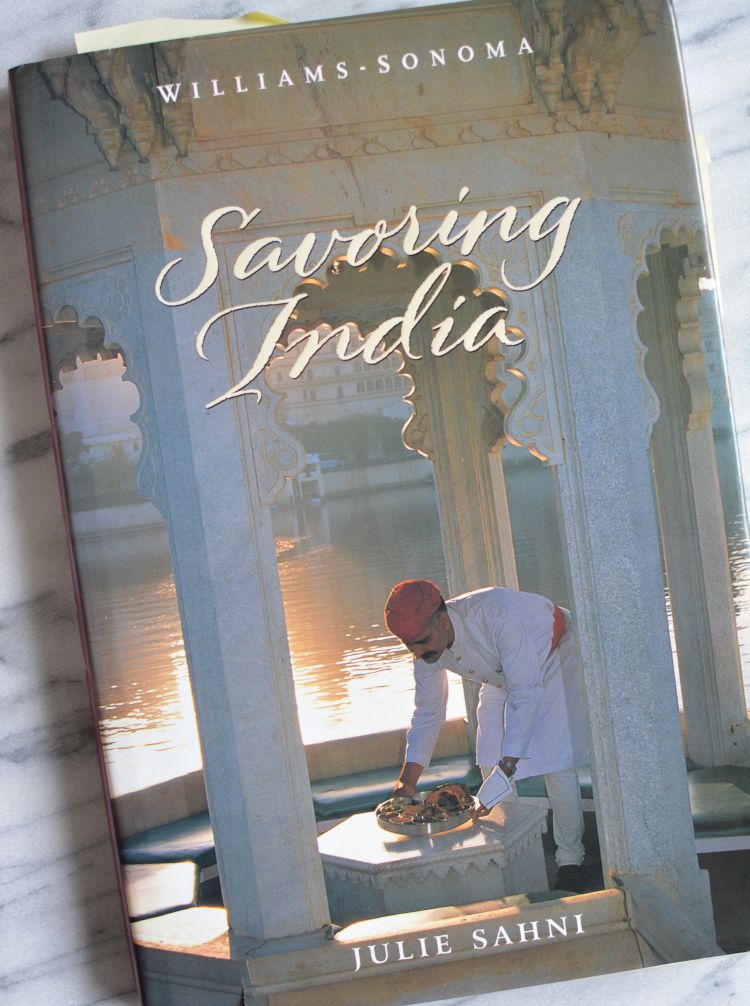
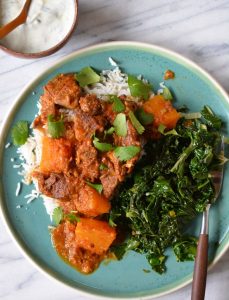




Nik Sharma says
Andrea, this is so wonderful and I'm so glad we share the same thoughts on this topic. Julie Sahni was someone who I wish more people knew about, her work has always been instrumental to my learning more about Indian cooking.
Andrea Nguyen says
Thanks, Nik, for being in the Julie Sahni Appreciation club with me and lotsa others! She's definitely someone that more people need to know about -- or to remember.